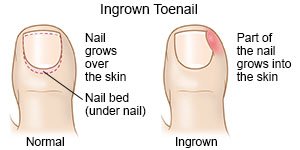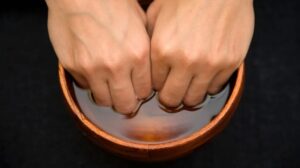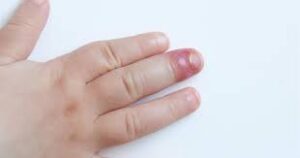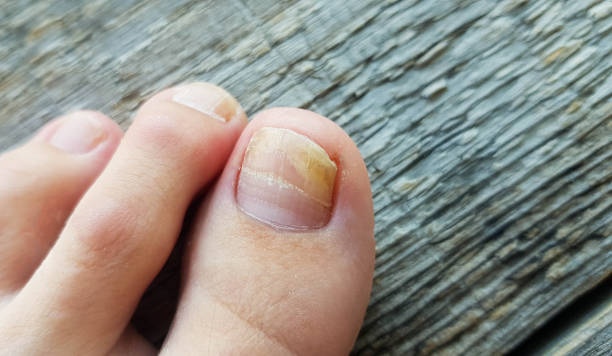An ingrown fingernail can hurt a great deal and cause serious trouble if not attended to on time. This condition is pretty common but can be treated at home or with just a little effort. Here we are going to talk about how you can get rid of the situation in simple steps at home.
But, before that, it is imperative for you to understand what ingrown nails are and everything necessary to get away with the condition seamlessly without any professional help.
Ingrown Fingernail- The Missing Perception
All this while, we have noticed a lot of people talk about the ingrowths in their toenails. Since the condition is quite frequently prevalent among the general populace, people have seemed to have come to a conclusion that the ingrowth of nails is only a thing associated with the toenails.

It is imperative for you to understand that ingrown fingernails are also a condition and are prevalent, if not more than the toenails. So here, take a look at the ingrown fingernail treatment with us in the following write up.
What does it look and feel like?
You must be aware that all the nails are made up of a protein called keratin. When dense layers of these keratinized protein cells move and push towards the surface of your fingers, nails are formed.
Ridges on the nails of your fingers correspond to the ridges of the skin of the same finger and these ridges make sure that a nail is upheld in place.

Ingrowth occurs when there is a change in the shape of your nails. This makes the ridges become loose and thus, the nails start to grow in the corners of the fingertips.
There can be a number of causes of the same:
- Injury
- Infection with fungus
- Too quick or sluggish growth of nails
- Incorrect clipping of nails, such as missing out the tips of the nails.
- Biting nails
Hope you were able to grasp the simple nature of ingrown fingernails. It is time now that we discuss how to treat an ingrown fingernail .
How to treat infected ingrown fingernail?
Before we get into the nitty-gritty of the treatment of ingrown fingernails, take a note-Diabetes, neuropathy, or issues in the circulation should not treat the nails ingested in their homes. In such circumstances, a physician should be seen for safe treatment.
Wash your hands thoroughly with soap and water before trying to treat the caught nail at home.
Soaking:
For the mild condition of ingrown nails, you could try beginning with the soaking treatment. Soaking them makes them grow outwards on their own. Here is a detailed procedure of this method:

- Take a container big enough to soak your fingers. Now fill it up with bearable warm water and dip your fingers in it.
- Soak the hands for as long as 15-20 minutes.
- Once done, rinse your hands and wipe them with a clean and dry towel.
- The next step is pretty much optional and can be skipped if not convenient. Cover the fingernails with an antibiotic ointment to prevent any further infection.
Cotton or Gauze:
Soaking might not be the best and the most effective way of treating ingrown nails. For this reason, you can even try to alter the growth of your nails in an upward direction. The procedure is very simple for this method too.
After soaking your hands, just take a piece of cotton or gauze and put it under the tips of your nails.

This will help in relieving the pain and moving the nail away from the skin slightly. Make sure you replace the piece of cotton at least twice a day to prevent infection and monitor the recovery.
Dental floss:
If you feel the cotton or gauze method isn’t working for you because of the tight orientation of the nails, you could try doing the same with dental floss.

So for this one, after soaking the hands, you take dental floss and gently pull it under the infected nails to promote outward growth.
Albeit, these methods are likely to cure the condition of ingrown fingernails, yet, we advise you to visit a doctor in case the infection seems to be inevitably out of hands. Following is more information on the infections that can be caused due to ingrown fingernails.
Infections:
Bacteria or fungus may enter the body through a breach in the epidermis with an ingrown nail. The resultant infection may be the multiplication of these bacteria or fungi.

If any indications of infection arise, a person should contact the doctor. These might include:
- Redness of the pain or swelling
- Skin fever pus or fluid reddish streaks
- Try to use excellent handwashing procedures to prevent illnesses. CDC suggests that hand cleaning is recommended for a minimum of 20 seconds CDC Soap and flowing water trusted source.
Takeaway:
Ingrown fingernails do not tend to cause any serious issues. Simple methods like soaking in water, cotton or gauze method or dental floss method can be adequately effective perform with care.
Yet, if any signs of infection are visible, we advise you to immediately see a doctor and get treatment for the same.
See More:
White Spot on Tonsils: How to Get Rid from This
Buccal Fat: Everything About this

